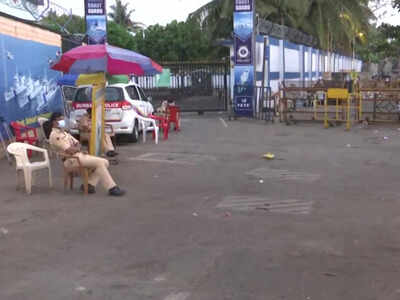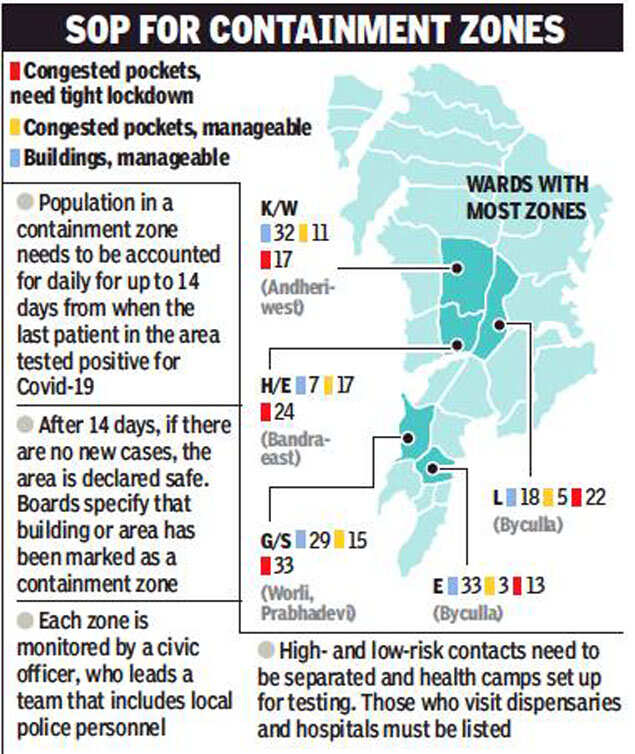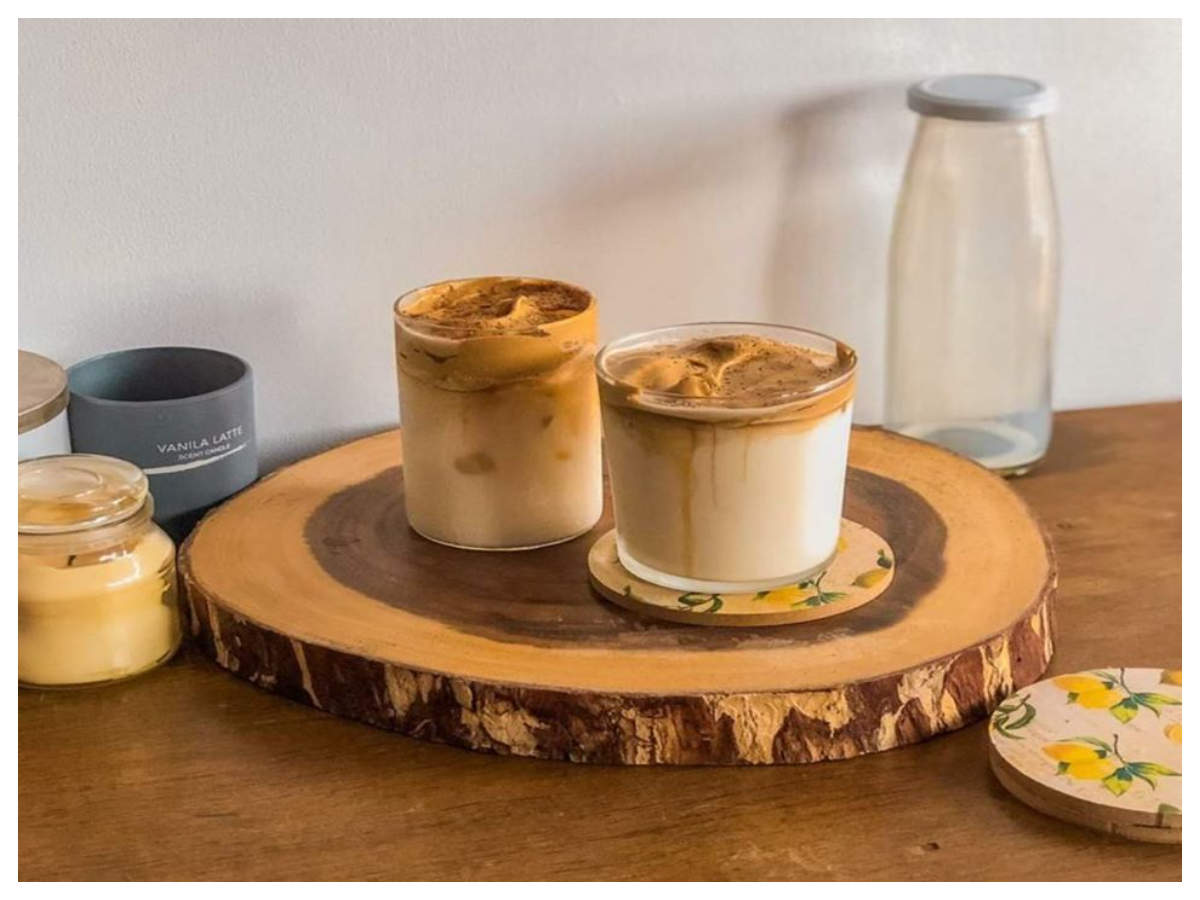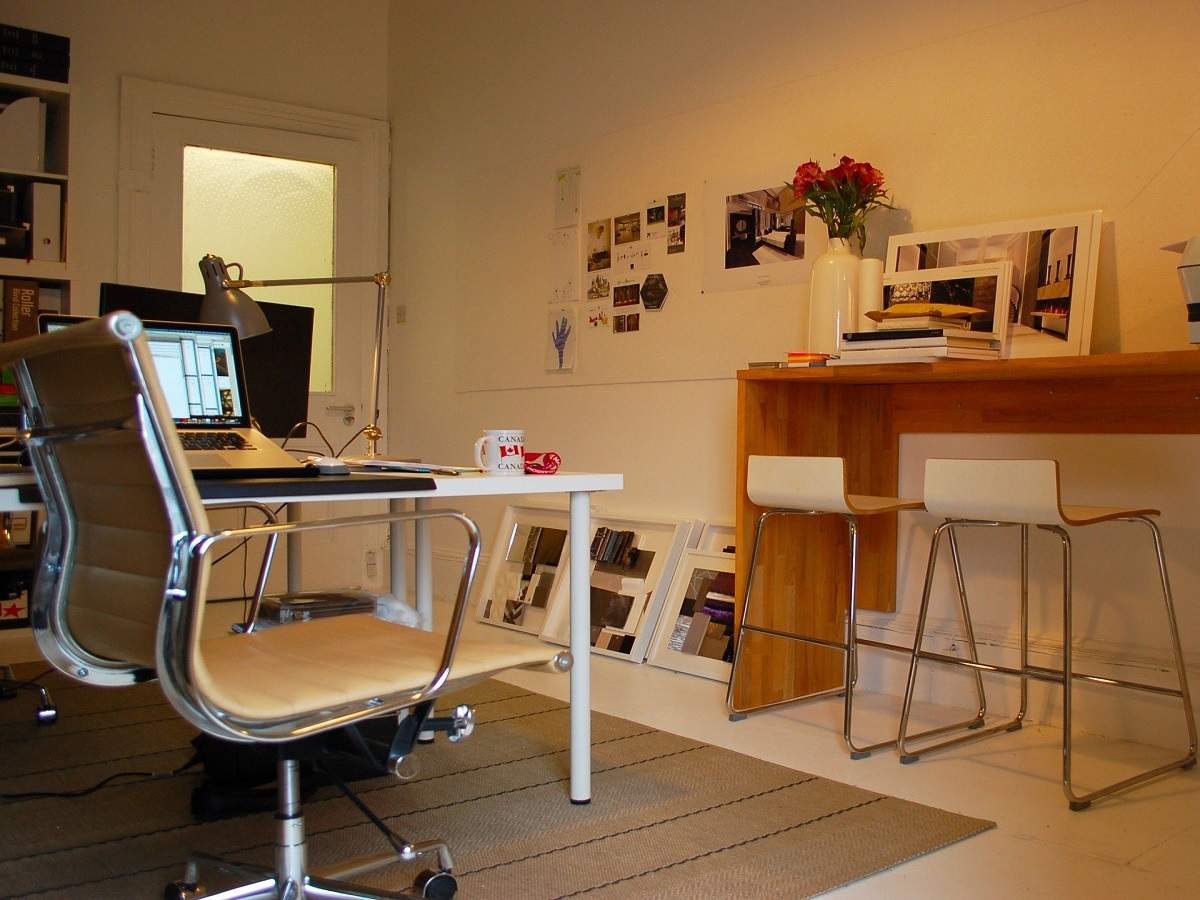
MUMBAI: The number of containment zones in the city has increased by over 90 since the weekend. With over 3,450 Mumbaikars testing positive for Covid-19, the city now has 817 containment zones, up from 721 just three days ago.
Considering the rapid increase in the zones — which are designated areas from where a person tests positive for coronavirus and where his or her high- and low-risk contacts live — the BMC has graded them by a colour-coding system: Red is for congested pockets requiring tight lockdown, orange is for congested pockets that are manageable with less stringent restrictions, and blue is for buildings that are similarly manageable. In all, 297 zones across Mumbai are marked red, 129 orange and 391 blue.

“There was a need to categorise the zones in order to decide how many BMC and police personnel need to be deputed to patrol a particular area. Red zones require the strongest presence of the authorities for ensuring stricter vigil,” said a civic official.
The rise in the number of containment zones has also meant an increase in the number of people who are quarantined there.
At last count, the number stood at 53,118. Initially, all of them were assigned home quarantine, but 4,292 were found to be living in congested homes and so were taken to institutional quarantine facilities.
Goregaon corporator Sandeep Patel said the biggest challenge is locking down slum pockets once they are marked as containment zones. “Many of those living in slums have a hand-tomouth existence. If they sit at home, they know their families would go hungry. Hence, the authorities have a tough time convincing people living in slums to stay at home,” he said. A social worker said that for anti-Covid measures to be effective, the authorities need to ensure that the daily needs of those living in poverty in containment zones are taken care of.
Considering the rapid increase in the zones — which are designated areas from where a person tests positive for coronavirus and where his or her high- and low-risk contacts live — the BMC has graded them by a colour-coding system: Red is for congested pockets requiring tight lockdown, orange is for congested pockets that are manageable with less stringent restrictions, and blue is for buildings that are similarly manageable. In all, 297 zones across Mumbai are marked red, 129 orange and 391 blue.

“There was a need to categorise the zones in order to decide how many BMC and police personnel need to be deputed to patrol a particular area. Red zones require the strongest presence of the authorities for ensuring stricter vigil,” said a civic official.
The rise in the number of containment zones has also meant an increase in the number of people who are quarantined there.
At last count, the number stood at 53,118. Initially, all of them were assigned home quarantine, but 4,292 were found to be living in congested homes and so were taken to institutional quarantine facilities.
Goregaon corporator Sandeep Patel said the biggest challenge is locking down slum pockets once they are marked as containment zones. “Many of those living in slums have a hand-tomouth existence. If they sit at home, they know their families would go hungry. Hence, the authorities have a tough time convincing people living in slums to stay at home,” he said. A social worker said that for anti-Covid measures to be effective, the authorities need to ensure that the daily needs of those living in poverty in containment zones are taken care of.

Coronavirus outbreak
Trending Topics
LATEST VIDEOS
City
 COVID-19: Karnataka Gramin Bank mobile ATM providing cash at doorstep
COVID-19: Karnataka Gramin Bank mobile ATM providing cash at doorstep  COVID-19: Lockdown violators write apology 500 times in Vijayawada
COVID-19: Lockdown violators write apology 500 times in Vijayawada  COVID-19 lockdown: Security tightens after GautamBuddha Nagar DM orders to seal Delhi-Noida border
COVID-19 lockdown: Security tightens after GautamBuddha Nagar DM orders to seal Delhi-Noida border  J&K govt setting up 3,000 bedded capacity COVID-19 wellness centers in Srinagar
J&K govt setting up 3,000 bedded capacity COVID-19 wellness centers in Srinagar
More from TOI
Navbharat Times
Featured Today in Travel
Get the app





